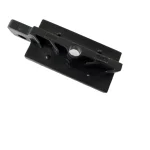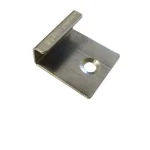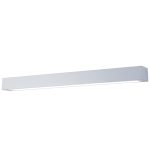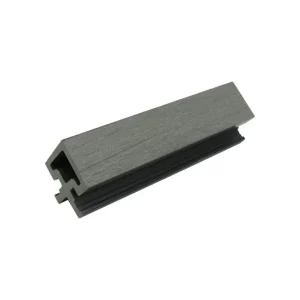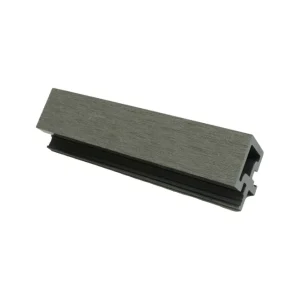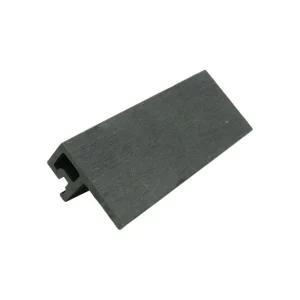Cumpara din magazin:
Cumpara din magazin:
Fishing Frenzy – Unlock the Secrets to an Unforgettable Angling Adventure
Selecting the Right Gear for Your Expedition
Choosing the Best Rod for Your Needs
Essential Accessories Every Angler Should Have
Understanding Types of Fishing Line for Optimal Performance
Locating the Best Spots: A Fisherman’s Guide
Fishing Frenzy – Unlock the Secrets to an Unforgettable Angling Adventure
Experience a thrilling journey on the water with our exclusive guide tailored for enthusiasts of all levels. Dive into a realm of specialized techniques fishin frenzy big splash demo and expert advice designed to elevate your skills. With over 20 unique locations, you’ll discover prime spots brimming with diverse species, from bass to trout.
Master Your Techniques: Learn the art of precision casting, bait selection, and seasonal tactics to increase your success rate. Our detailed sections break down each method, ensuring you can adapt to various environments, whether it’s a serene lake or a rushing river.
Essential Gear Recommendations: Equip yourself with top-rated tackle and gear essentials that cater to your fishing style. We provide comprehensive comparisons and user reviews for rods, reels, and accessories, so you make informed investments.
Connect with Nature: Immerse yourself in breathtaking landscapes, benefiting from mental and physical wellness as you engage with the great outdoors. Discover how tranquility can enhance your concentration and overall satisfaction during your escapades.
Join a Community: Gain access to exclusive forums and local events where you can connect with fellow enthusiasts. Share experiences, tips, and even arrange meet-ups for group excursions.
Transform your outings into thrilling quests filled with excitement and camaraderie. Get ready to cast away the ordinary and embrace extraordinary moments with our ultimate guide!
Selecting the Right Gear for Your Expedition
When preparing for a successful outing on the water, choosing appropriate equipment plays a crucial role in your overall experience. The right tools can enhance your effectiveness while ensuring comfort and enjoyment. Here are essential considerations to guide your selection process:
- Rod and Reel:
- Assess the type of species you intend to target; lighter rods are ideal for smaller species, while heavier rods suit larger fish.
- Choose a reel with an appropriate gear ratio–higher ratios for quick retrieves and lower ratios for lifting heavier loads.
- Line:
- Opt for a fishing line that matches your rod’s specifications; test power should correlate with the weight class of your target.
- Consider monofilament for beginner ease, braid for strength and sensitivity, and fluorocarbon lines for invisibility underwater.
- Lures and Baits:
- Understand the local ecosystem to select lures that mimic local prey effectively; color and movement can be a deciding factor.
- Experiment with various techniques–topwater for surface dwellers, spinnerbaits for versatility, or jigs for deeper waters.
- Clothing and Accessories:
- Wear moisture-wicking and quick-drying materials to maintain comfort throughout the trip.
- Consider sun protection gear, including hats and UV-blocking clothing, to prevent skin damage during prolonged exposure.
- Other Essentials:
- A well-stocked tackle box should contain pliers, scissors, and extra hooks, ensuring you are ready for any situation.
- Don’t forget safety items such as a first aid kit, life vest, and sufficient hydration for a secure outing.
By carefully selecting each component, you enhance your chances of a productive escape. Take the time to research and test gear tailored to your needs and preferences, ultimately enriching your exploration on the water.
Choosing the Best Rod for Your Needs
Selecting the right pole can significantly enhance your experience. There are several factors to consider that will help you match your equipment to your specific requirements.
Material: Modern rods are typically made from fiberglass, graphite, or a composite blend. Fiberglass is durable and affordable, ideal for beginners or casual outings. Graphite offers sensitivity and responsiveness, making it preferable for skilled users who need to detect subtle bites. Composite rods combine the benefits of both materials, providing a balanced option.
Length: The length plays a critical role in casting distance and control. Standard options range from 5 to 10 feet. Shorter rods (around 5-6 feet) allow for better accuracy in tight spaces, while longer models (7-10 feet) offer greater reach for distant targets. Consider your fishing environment when deciding on length.
Power: This refers to the rod’s strength and its ability to handle varying weight classes of lines and lures. It is categorized as ultra-light, light, medium, medium-heavy, and heavy. Choose a power rating that matches the species you are targeting; lighter power is suitable for small catches, while heavier setups are necessary for larger fish.
Action: This describes how much the rod flexes when pressure is applied. Fast action rods bend near the tip, providing quick response and enhanced sensitivity, making them suitable for precise presentations. Moderate action models bend in the middle, offering a balance between sensitivity and control, while slow action rods flex throughout, ideal for fighting larger catches.
Technique: Consider the method you plan to use. Spin casting, bait casting, or fly casting requires different rod specifications. If you’re using lighter lures, longer rods with a moderate action may be beneficial, whereas heavier lures might demand a stiffer, shorter design.
Budget: Price ranges can vary widely. While there are quality options available at lower prices, investing a bit more can improve durability and performance. Determine how often you plan to pursue this pastime and budget accordingly. A well-chosen rod can last for many seasons.
Evaluate these aspects carefully, and you’ll be well on your way to selecting the perfect rod to suit your fishing pursuits. Tailoring your equipment to your individual needs will optimize your experience on the water.
Essential Accessories Every Angler Should Have
Quality tackle box is a must-have for organizing lures, lines, and tools. Opt for models with adjustable compartments to easily customize storage according to your gear.
Durable fishing gloves provide protection from sharp hooks and abrasive surfaces. Look for breathable materials that ensure comfort during extended periods on the water.
A reliable multi-tool can simplify tasks ranging from cutting line to removing hooks. Choose one with a sturdy build, and ensure it includes essential features like pliers and scissors.
Polarized sunglasses are critical for reducing glare off the water’s surface, allowing for clearer sight of underwater structures and fish. Select lenses with UV protection for added eye safety.
High-quality bait buckets are invaluable for keeping live bait fresh and accessible. Invest in insulated options that maintain a consistent water temperature, enhancing bait longevity.
A portable fish finder enhances success by locating fish beneath the surface. Look for compact, user-friendly devices with good battery life for extended outings.
Comfortable, waterproof footwear prevents slips and offers stability while navigating wet terrain. Consider options with good traction and quick-drying features.
Finally, a compact first-aid kit is essential for handling minor injuries. Include band-aids, antiseptic wipes, and pain relief medication to ensure safety during trips.
Understanding Types of Fishing Line for Optimal Performance
Selecting the right line is crucial for achieving superior results during your outdoor activities. There are several categories available, each designed with specific characteristics tailored for various conditions and techniques.
Monofilament lines, commonly known for their versatility, offer excellent elasticity. This feature helps absorb shocks from sudden fish movements, making it ideal for beginners. When choosing thickness, consider a diameter that balances strength with manageability; typically, a range from 6 to 20 lb test is suitable for most situations.
Braid lines stand out for their exceptional strength-to-diameter ratio. This type boasts minimal stretch, providing increased sensitivity to bites. Additionally, braids have a small diameter, allowing for longer casts and the ability to cut through water vegetation. It’s advisable to use a leader when tying on hooks, as braided lines can be quite visible to fish.
Fluorocarbon lines feature a refractive index close to water, making them nearly invisible underwater. This property reduces the chances of scaring away wary species. Fluorocarbon also sinks faster than monofilament, making it an ideal choice for deep-water tactics or when fishing near the bottom. Aim for a test rating based on your targeted species size, typically between 8 and 20 lbs.
When considering line choice, factors such as water clarity, species behavior, and specific environments should guide your decision. Experimenting with different types can help you understand their unique behaviors and find the perfect fit for your outings.
Maintenance also plays a vital role in line longevity. Regularly inspect for abrasions, twists, or knots, and replace worn segments promptly to ensure optimal performance. A well-maintained line maximizes your chances of landing that prized catch.
Locating the Best Spots: A Fisherman’s Guide
Identifying prime locations can significantly boost your chances of a successful outing. Start by researching local bodies of water, including lakes, rivers, and coastal areas. Online resources such as fishing reports and community forums provide invaluable insights into recent catches and popular zones.
Consider seasonal patterns. During warmer months, fish are often found near the surface in shallow areas, particularly near structures like rocks, fallen trees, or aquatic vegetation. In colder months, they tend to move to deeper waters. Map out depth charts if available to understand better where schools may congregate.
Time of day plays a crucial role; dawn and dusk are typically prime moments when many species are actively feeding. Pay attention to weather conditions, as overcast days can yield better results, while bright, sunny weather might drive fish to deeper, cooler regions.
Observe the behavior of wildlife. Birds diving into the water or presence of insects on the surface can indicate active feeding zones. Additionally, look for signs such as bubbles or swirling water, which may suggest movement beneath the surface.
Don’t overlook the importance of local regulations. Make sure to check guidelines regarding catch limits, protected species, and restricted areas to ensure a responsible and enjoyable experience.
Finally, connecting with local anglers can provide on-the-ground knowledge about specific sites. Engaging with seasoned fishermen at bait shops or through social media can lead to tips that are not readily available in guides or online.

